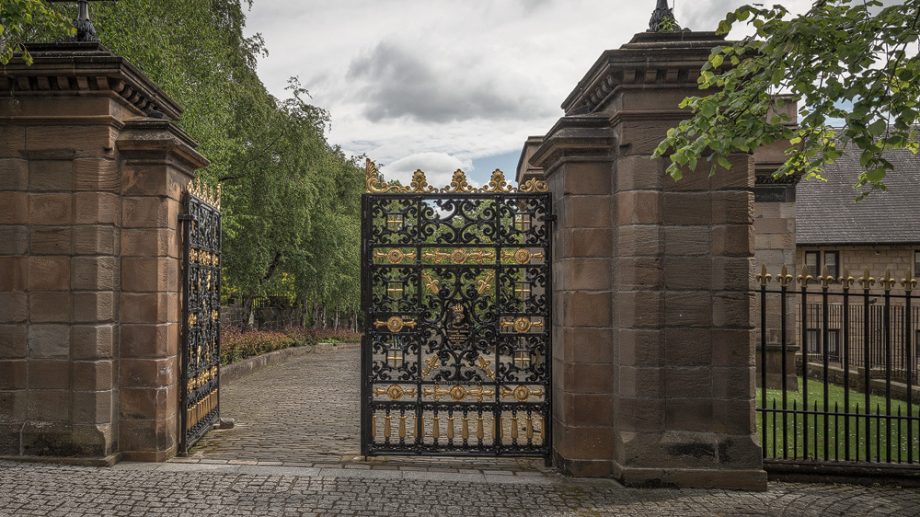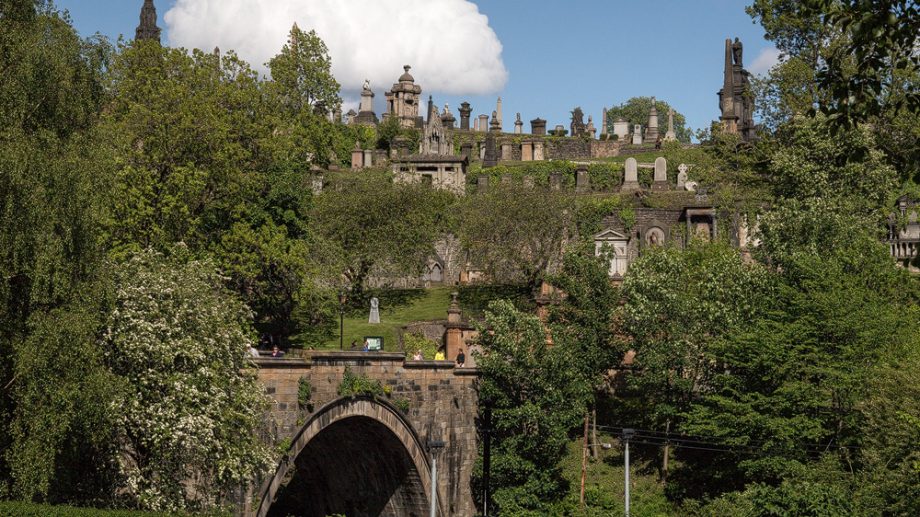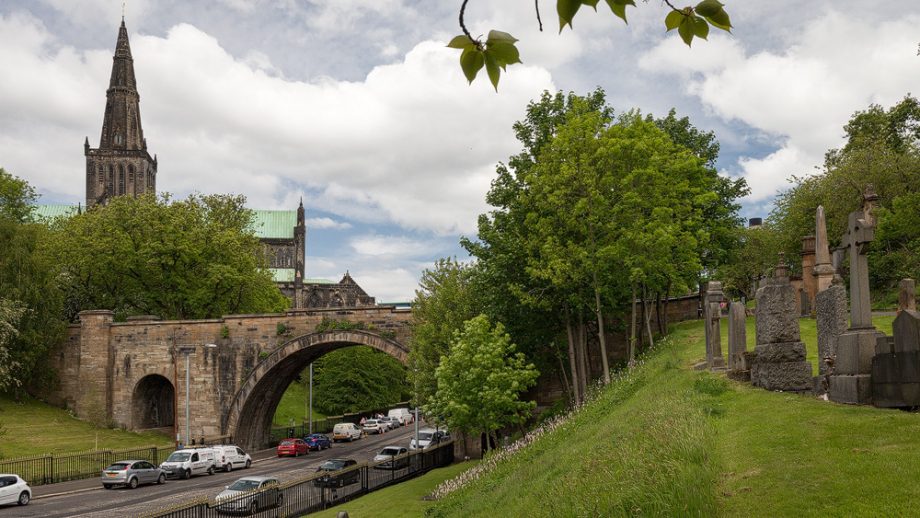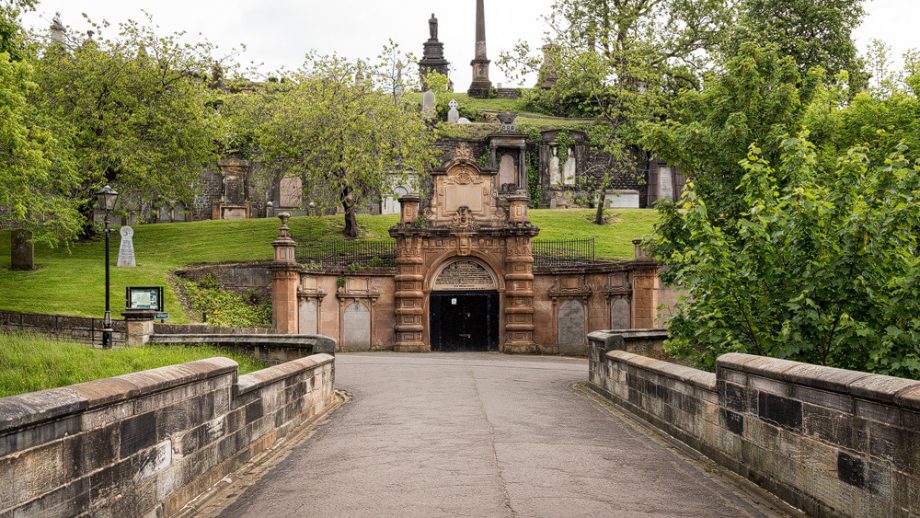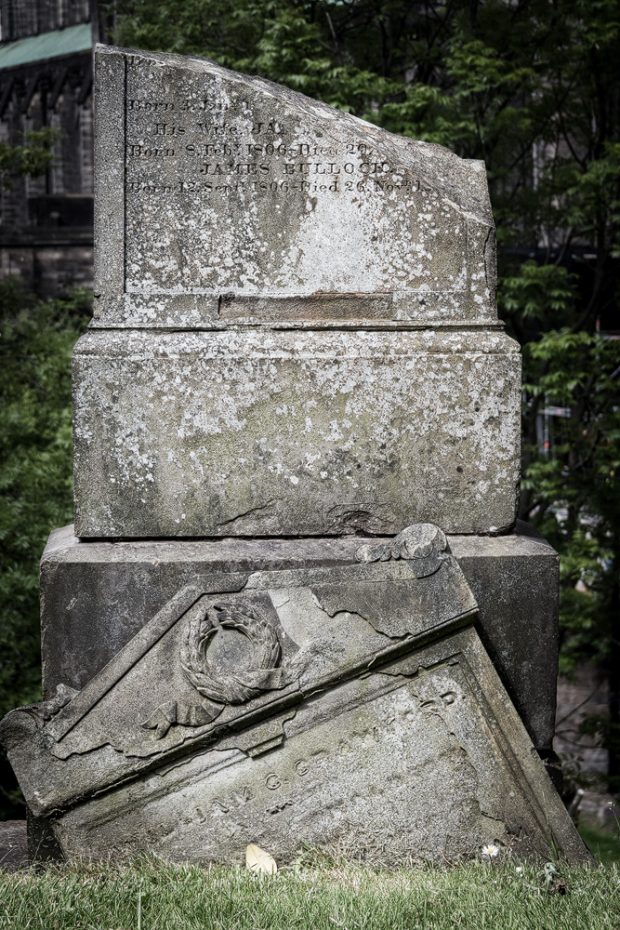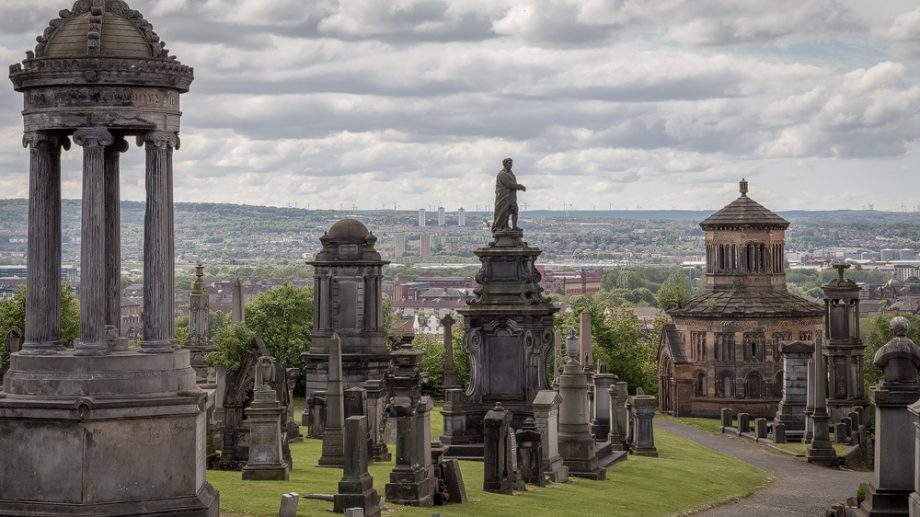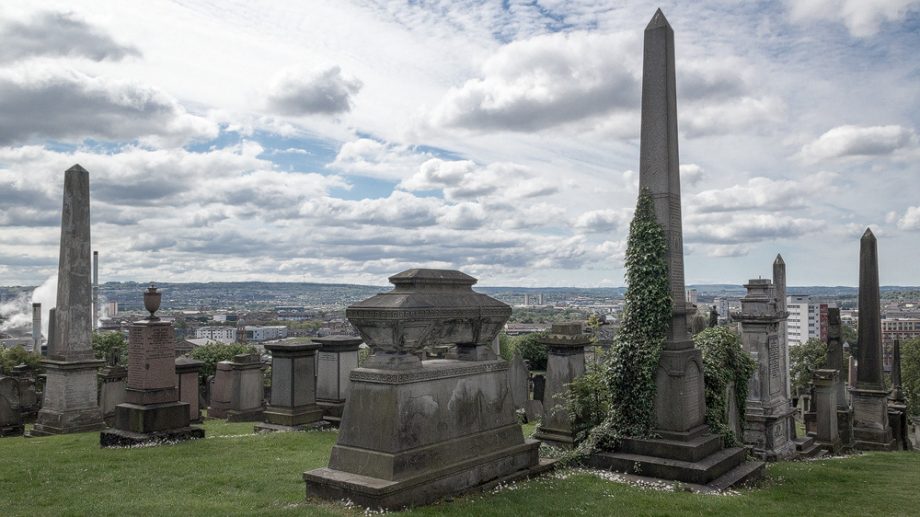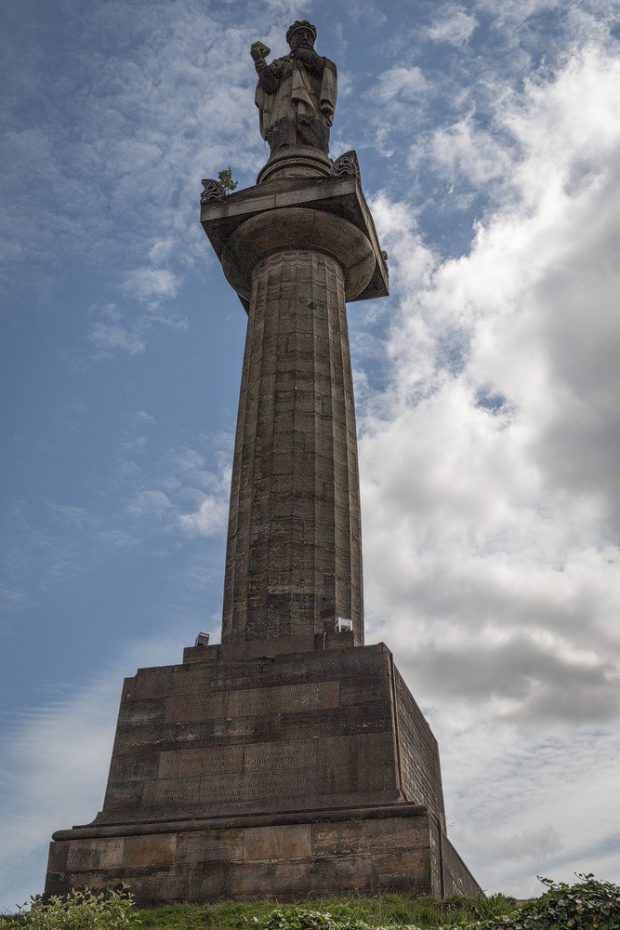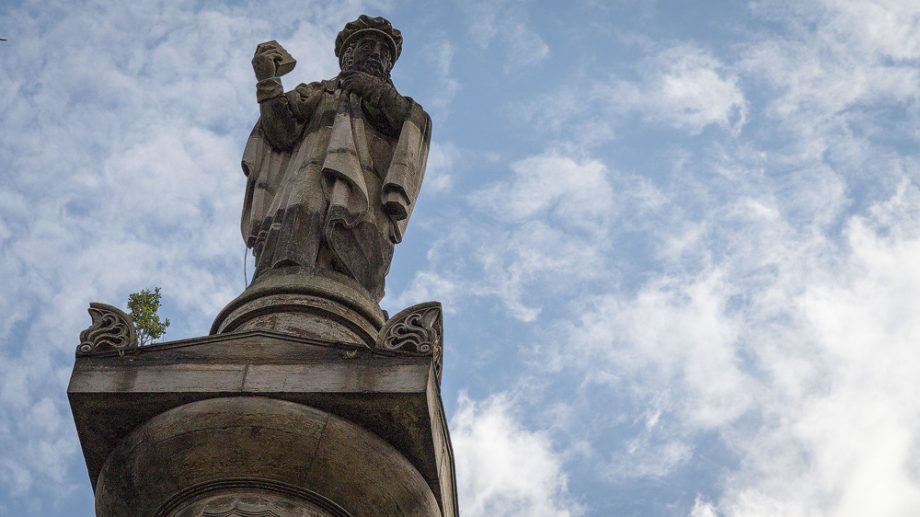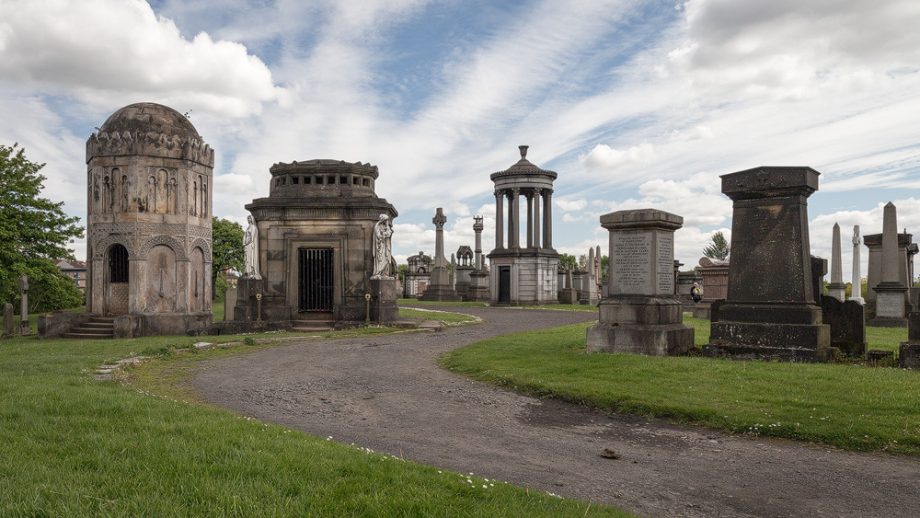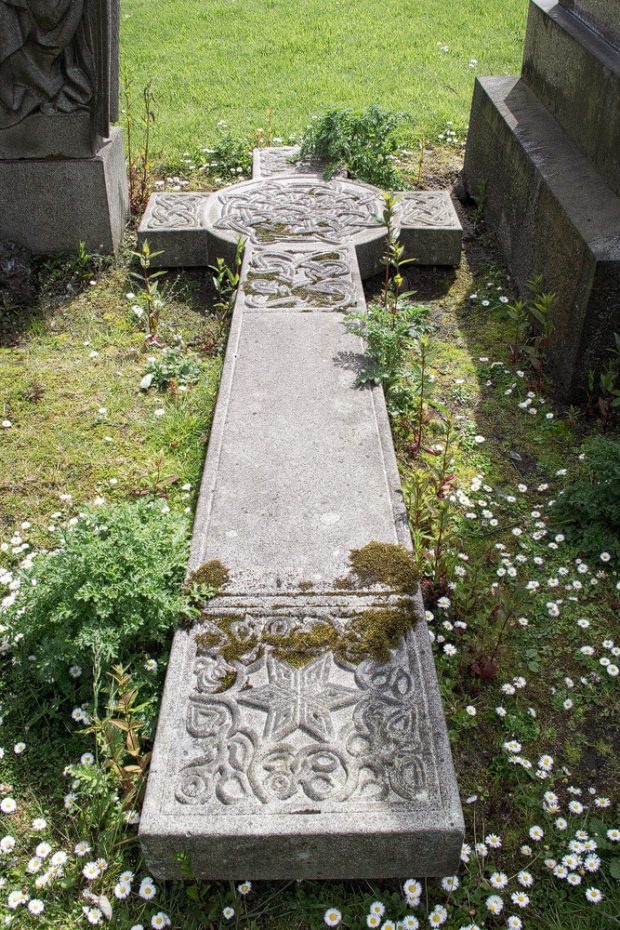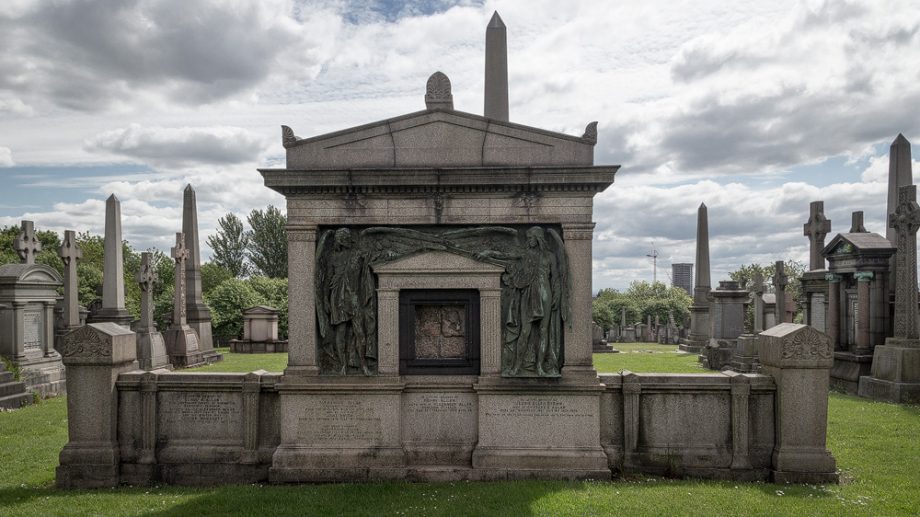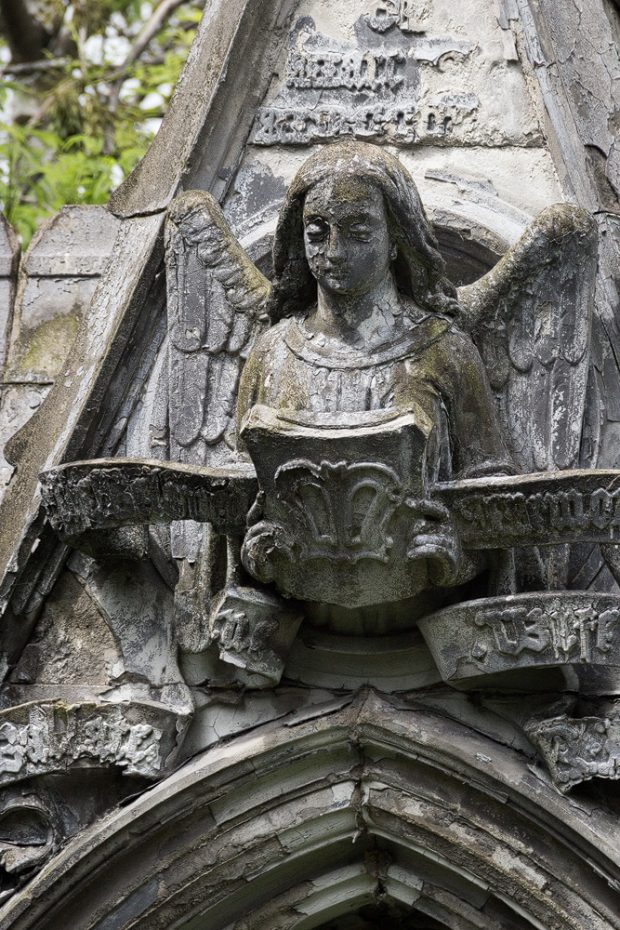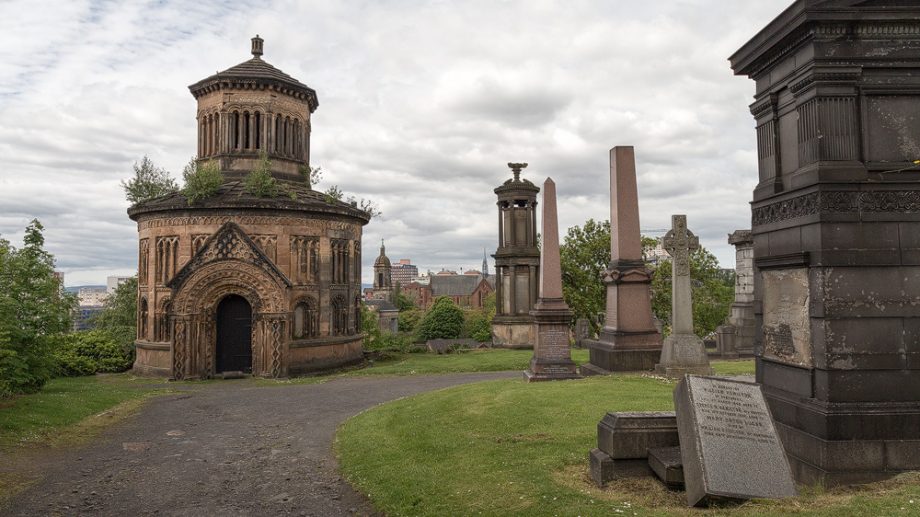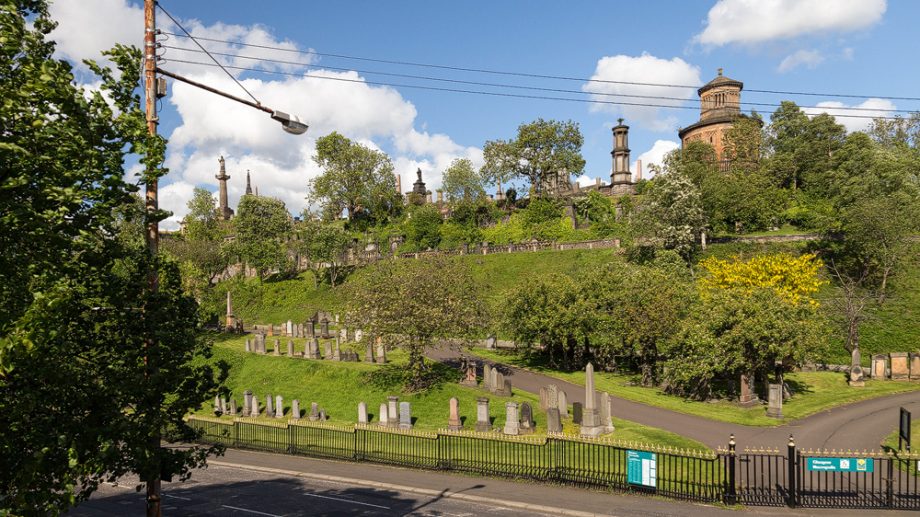Through the golden gate, over the Bridge of Sighs and into the city of the dead. The Glasgow Necropolis is home to as many dead people as a medium-sized city has inhabitants. And they live here in quite respectable Victorian palaces.
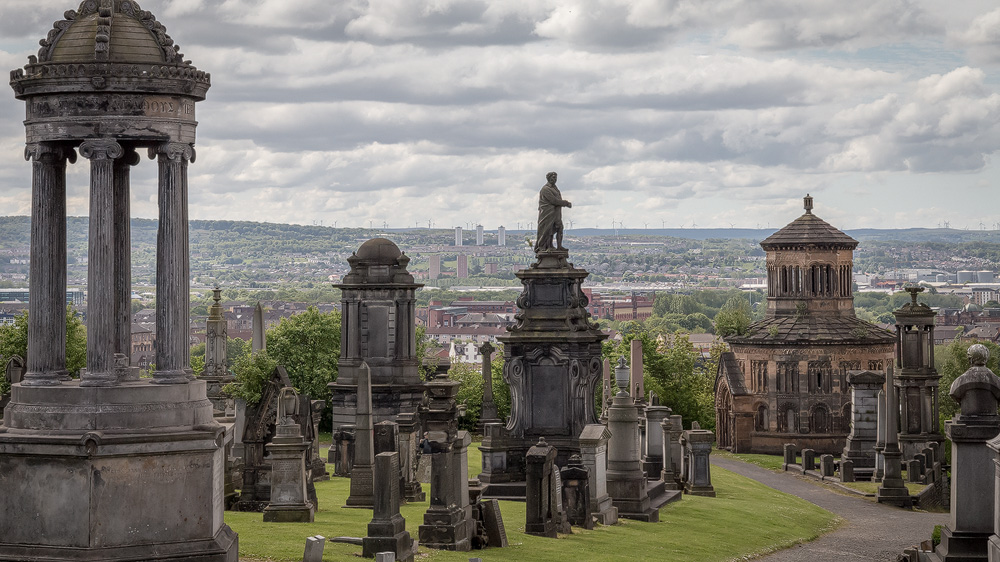
50.000 dead people have made their final journey across the Bridge of Sighs. Today, however, thousands of living people cross the bridge, which forms the main entrance to Glasgow Necropolis. They too are travellers, but fortunately only passing through.
The fact that this cemetery in Scotland’s largest city is rightly popular is down to its beauty: old Victorian pavilions, crypts and monuments nestle against the hill known as “The Craigs”, with the column of the reformer John Knox crowning the scene at the very top – although he is not buried here.
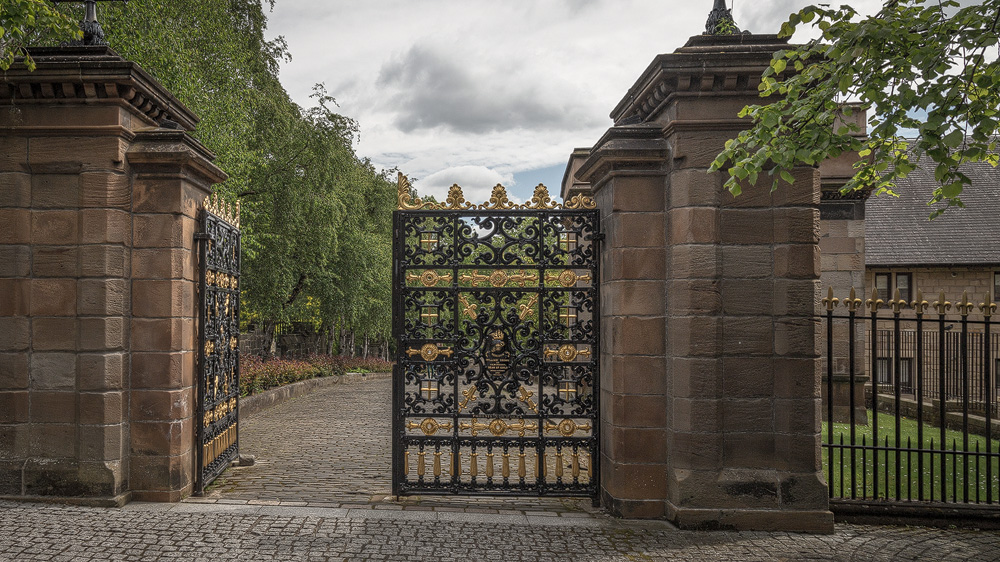
The Glasgow Necropolis was originally reserved entirely for the living. It was initially designed as a park, with many fir trees and the John Knox monument as the centrepiece. In 1650, the Chamber of Commerce bought the land and Glasgow’s citizens used it as a kind of recreational area.
It was not until 1831 that the then treasurer John Strang suggested turning the park into a cemetery modelled on the “Père Lachaise” in Paris. A place for all denominations, which was located outside the city and yet was an inspiration for the living when they visited. At the same time, he saw this as a good source of funding, as funerals had previously always been organised by church congregations.
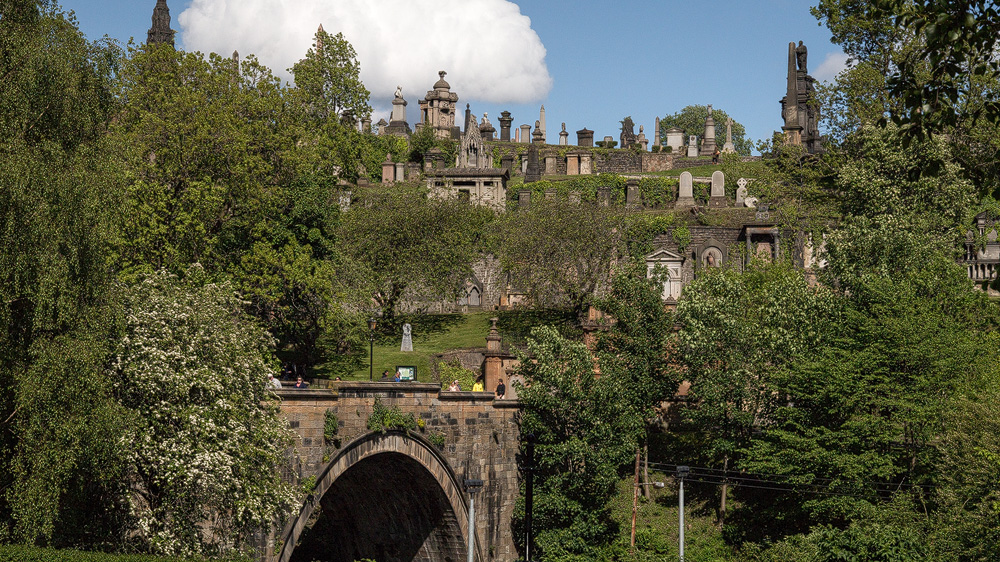
There was a tender among architects and the winning plan was quickly realised. As early as 1832, Joseph Levi, a Jew, was the first person to be buried in the Glasgow Necropolis. Many more burials followed. in 1836, the bridge over the Molendinar Brook was finally opened.
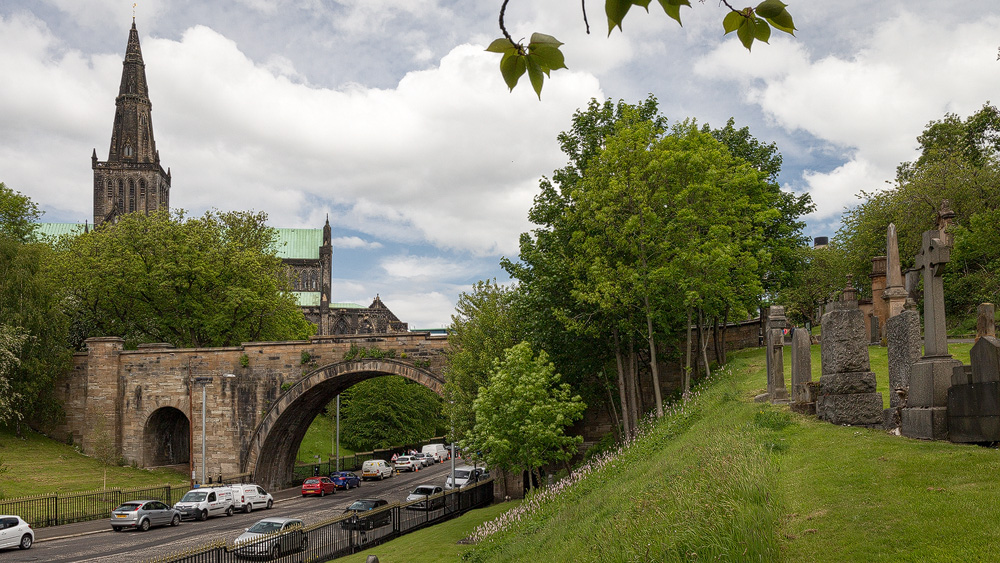
As the dead were often carried to the cemetery sobbing here, it was nicknamed the “Bridge of Sighs”. This is also an allusion to the bridge of the same name in Venice, where prisoners were carried across.
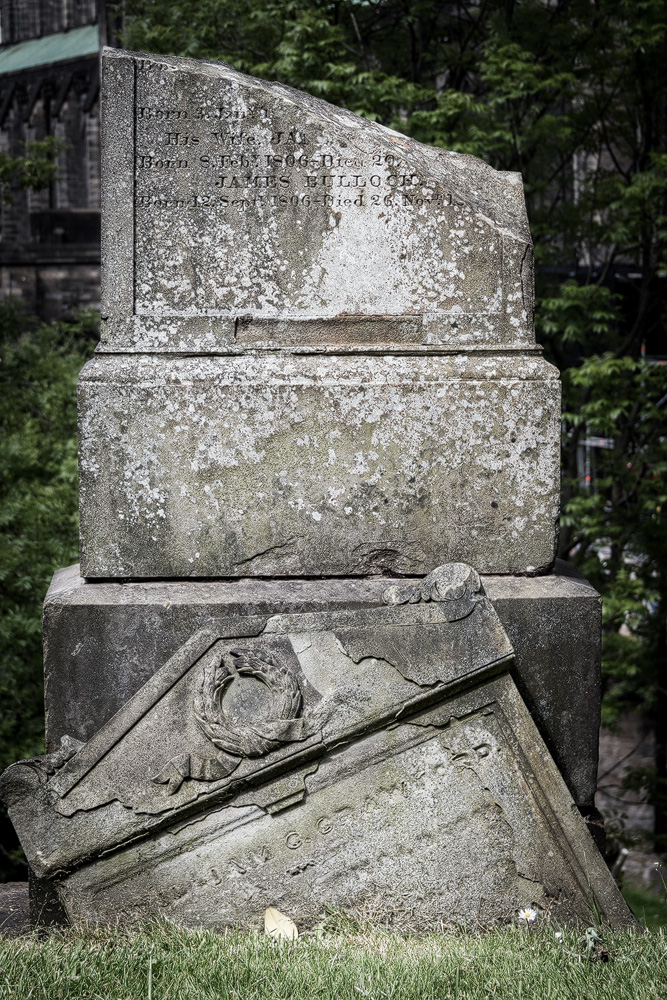
Wait a minute: the bridge led over a stream? There’s nothing left of it today! That’s right, because not only people were buried at the Necropolis. The “Molendinar Burn” was also buried underground – in a canal under Wishart Street. It still flows there today as far as the River Clyde.
At the top of the path over the bridge, visitors first stand in front of a kind of walled gate. This was originally intended to be an entrance to the catacombs. There was only supposed to be a guarded passageway to the dead to prevent the theft of corpses for anatomical studies – a major problem at the beginning of the 19th century. But in 1832, the British government passed the “Anatomy Act”, which authorised the dissection of donated corpses. This meant that the problem of grave robbers disappeared overnight, and with it the idea of the catacombs. The former entrance was closed. However, the Glasgow Necropolis is not without protection: Park Rangers watch over the peace of the dead and patrol at night.
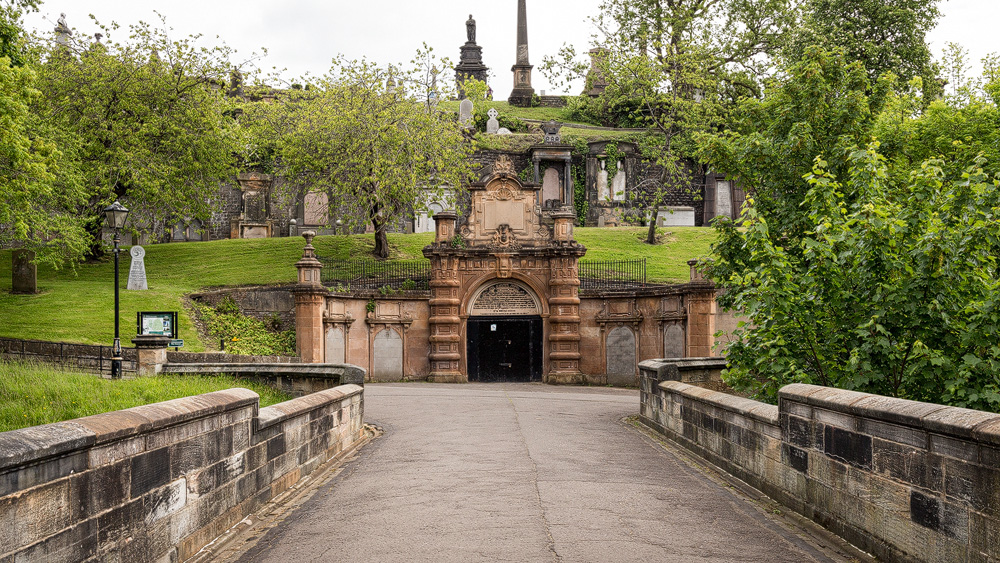
Over the almost two centuries of its existence, the Glasgow Necropolis has been extended several times. finally, in 1960, the Chamber of Commerce handed over the cemetery to the City of Glasgow along with a donation of £50,000.
Today, burials rarely take place in the Necropolis, as only those whose family already owns a plot are allowed to be buried here. Instead, the living once again cavort between the mausoleums and marvel at the city of the dead in Scotland.
Knowledge: Glasgow Necropolis has this many graves
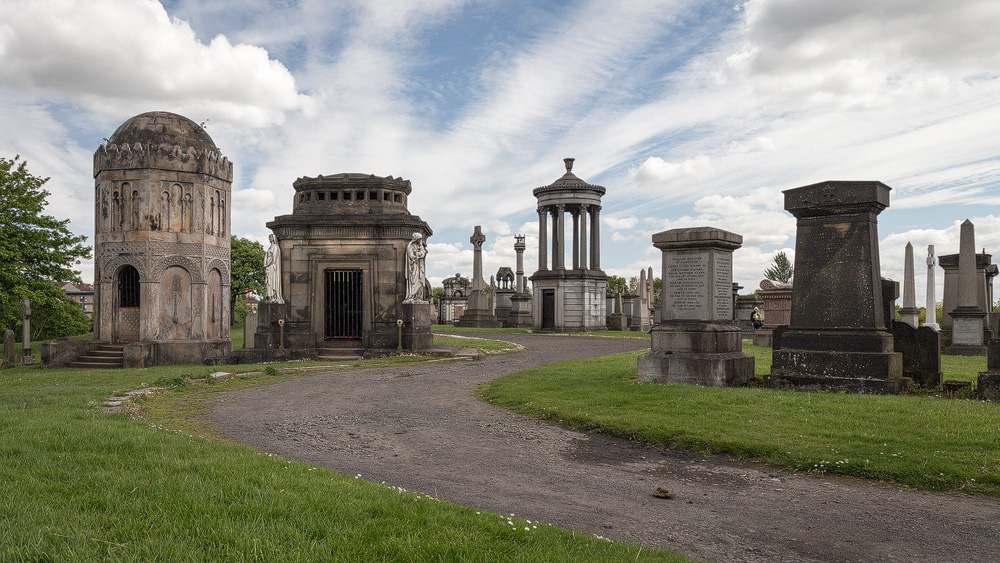
50.000 people are said to lie in the cemetery. But not every one of them has a gravestone. “Only” 3,500 memorials stand there on 15 hectares, the equivalent of more than 20 football pitches. The rest of the dead are unmarked under the grass that we tourists walk over – a somewhat creepy idea.
The memorials were often designed by famous architects, such as the Scottish design star Charles Rennie Macintosh. Of course, not everyone could afford such splendour, so some were donated to deserving citizens.
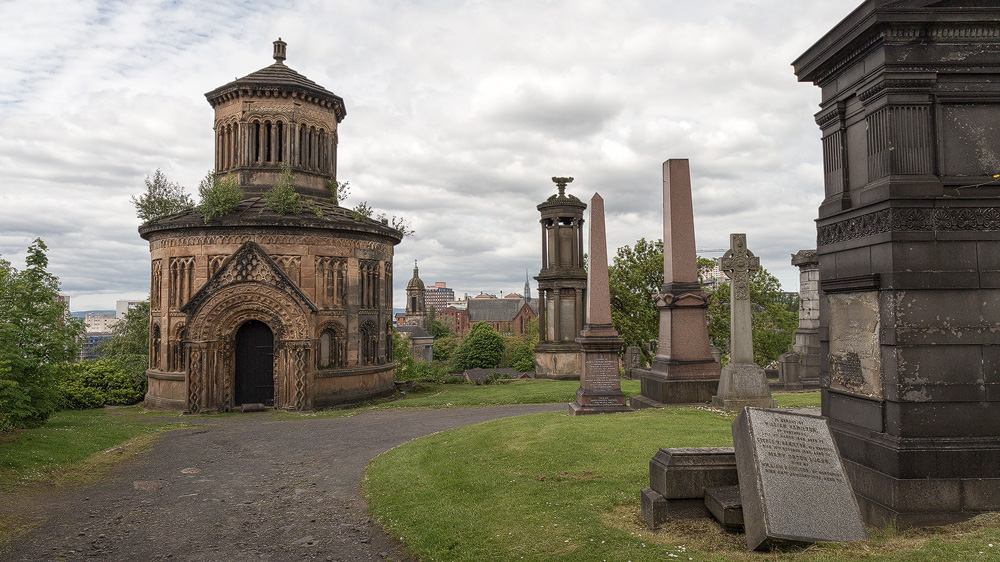
The Friends of Glasgow Necropolis were founded to ensure the preservation of the cemetery. They also organise joint tours with detailed information for participants. They do all of this on a voluntary basis, with all funds going towards the restoration of the Necropolis buildings.
Another interesting detail: the name Glasgow could mean “place of the grey rock” and refers to the second largest hill in the city. The very hill on which the Necropolis stands today.
Tips: Long waiting times for deserted photos
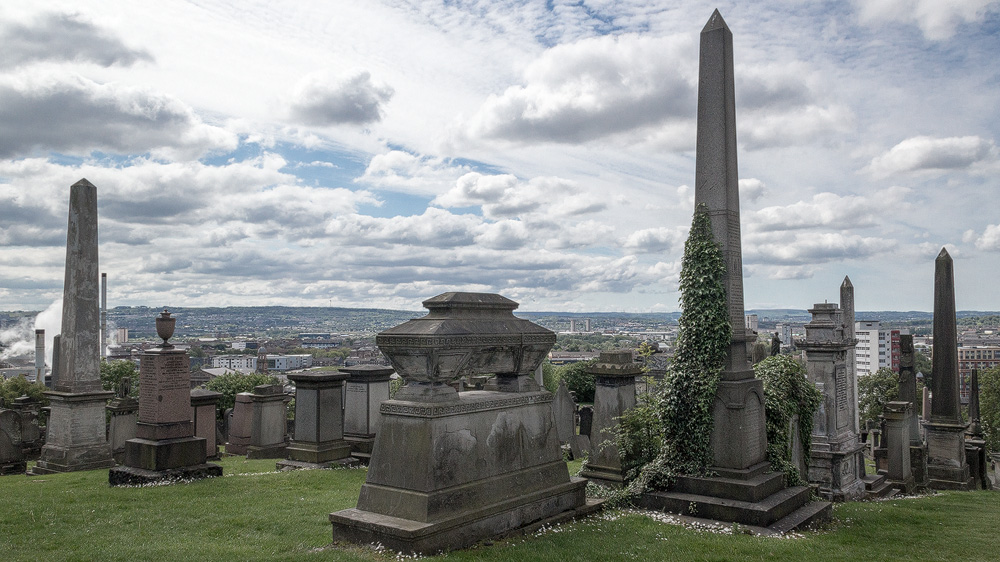
When we visited the Glasgow Necropolis in June, there were actually a lot of other tourists there. And it can take longer to get a free photo. That’s why my tip is to take your time if you want to take nice photos without other tourists.
Otherwise, I found the view from the Knox monument towards Tennent’s Brewery and the unobstructed view over the city to be the most beautiful to photograph. And be sure to pay attention to the small details on and around the gravestones.
Personal note: No admission to the city of the dead
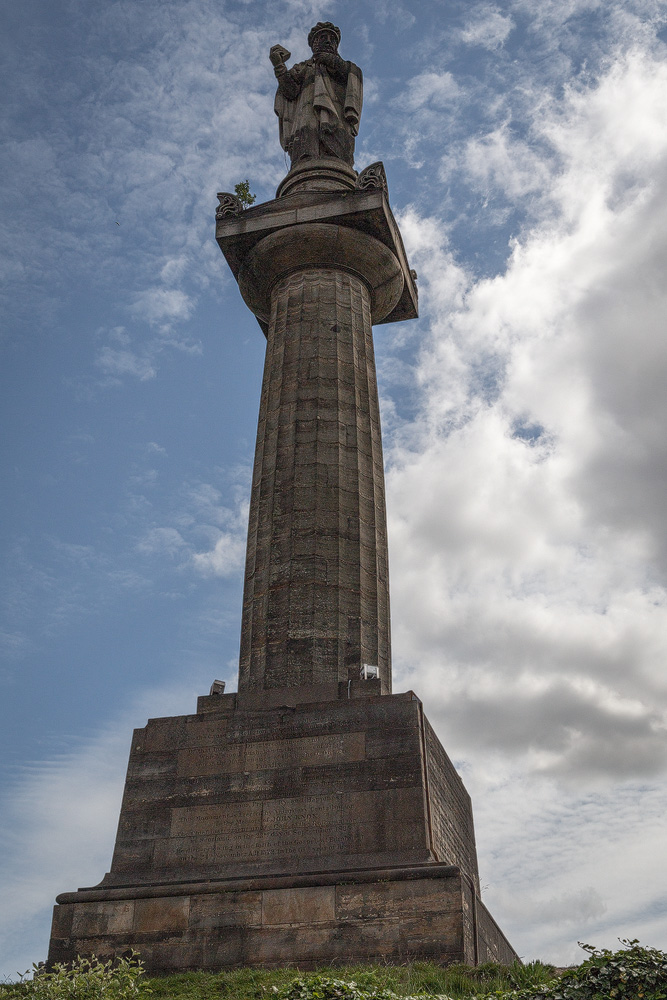
The travel guides and websites usually state that visitors are allowed into the Necropolis until dusk or that it is at least open until 5 pm. We were accordingly sad when, on our first visit, 4pm had just passed and that was the last time we were allowed in. The guards at the gates turned us away. We were very disappointed.
So we drove here in our hire car on the day of our departure, early enough and with plenty of time. It was worth it!
How to get there:
The Necropolis is on the Citysightseeing Glasgow bus tour, which starts at George Square. Depending on the season, the bus stops here every 10 or 20 minutes until the evening (ask the driver in advance). A ticket for two days at a price of around £15 is also worthwhile if you want to use the offer to visit other sights in the city.
You can also reach the Necropolis by car; I recommend using a satnav, for example by entering the street “Cathedral Square” near St Mungo’s Cathedral, where you will also find paid parking spaces. If you have a sat nav with a map code, you can enter “0QL.KC” – more information here.
